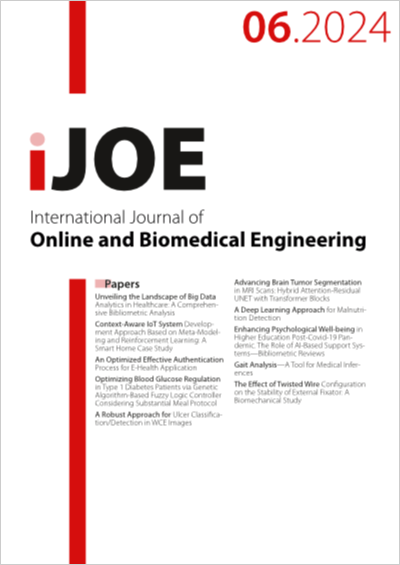The Effect of Twisted Wire Configuration on the Stability of External Fixator: A Biomechanical Study
DOI:
https://doi.org/10.3991/ijoe.v20i06.47293Keywords:
Ilizarov fixation, External fixation, Orthopedic fixation, stability, Bone segment stability, SimulationAbstract
The Ilizarov fixator is a type of external fixator that is used to treat patients who have suffered injuries from accidents, bone shortening, or nonunion of the bone. The principle behind the Ilizarov fixator is that thin wires (called Kirschner wires) are used to support the bones and connect them to framed rings. Before being fastened to the rings, the wires are tensioned and drilled through the bones. This study suggests using a new parallel wires configuration at the same level on the same ring and two revised versions, which are divergent and convergent models, and compare them with standard wires, 60 angle wires model. All models were designed using SolidWorks, a computer-aided design (CAD) software, and then analyzed in four conditions (axial compression, medial bending, posterior bending, and torsion) with Finite Element Analysis (FEA) using Ansys Workbench 2020 R2. Mechanical testing was conducted to validate the FEA results, A simple model consisting of a single ring, two K-wires, and polylactic acid (PLA) cylinders was utilized in a tensile test. It has been concluded from the results that the parallel model and its improvement have higher stiffness to axial compression, medial bending, and torsion, but a lower posterior bending stiffness, except the divergent model with 8-hole separation which has a relatively acceptable stiffness for posterior bending.
Downloads
Published
How to Cite
Issue
Section
License
Copyright (c) 2024 Alaa A. Najim, Sadiq J. Hamandi, Ahmed Alzubaidi

This work is licensed under a Creative Commons Attribution 4.0 International License.


